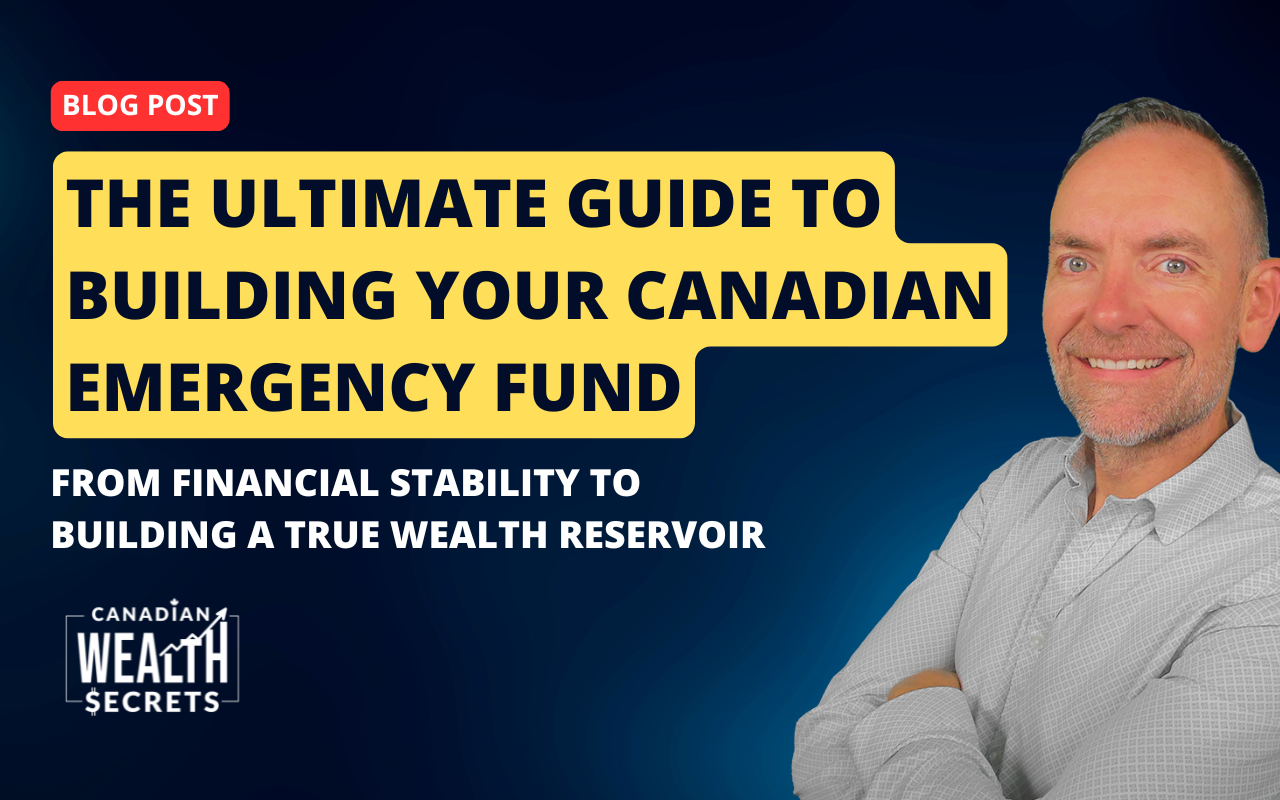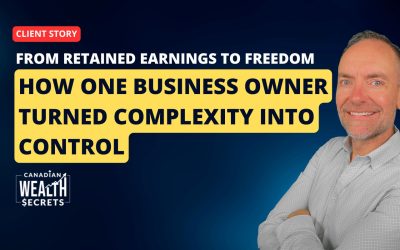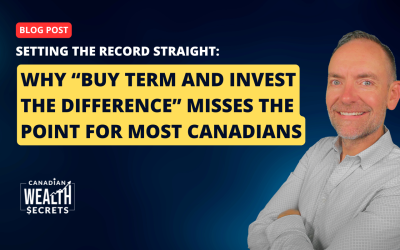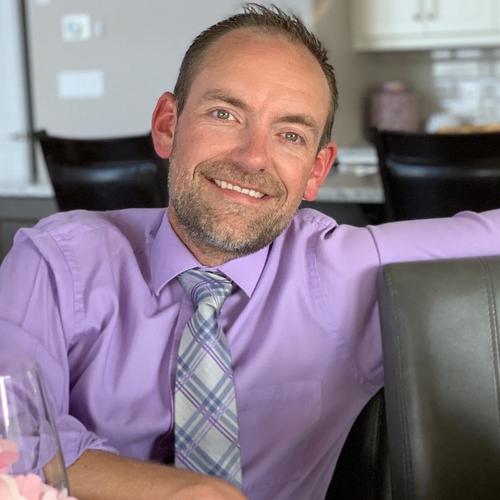How to Evolve from Financial Stability to a True Wealth Reservoir
If there’s one topic that’s both boring and absolutely essential to building lasting wealth, it’s the emergency fund.
I’ll be honest — most people don’t get excited about saving for “what ifs.” There’s nothing glamorous about cash sitting idle in an account, waiting for something bad to happen. But in my years working with Canadian families, entrepreneurs, and incorporated professionals, I’ve come to realize that your emergency fund is the foundation of every great wealth plan.
It’s the difference between reacting to financial stress and responding to opportunity.
And as your net worth grows, that same emergency fund should evolve — from a simple safety net into what I call your Wealth Reservoir: a powerful, liquid asset that protects your lifestyle today, fuels opportunities tomorrow, and ultimately supports your estate and legacy.
This is your ultimate guide to building that system — step by step, right here in Canada.
Why Canadians Still Need an Emergency Fund (Especially Now)
Let’s start with the “why.”
Despite years of financial education campaigns, many Canadians still aren’t prepared for unexpected costs. According to Statistics Canada, roughly one in four households couldn’t handle a $500 emergency without borrowing, and surveys from Angus Reid and Finder Canada show that more than half of Canadians would struggle to cover an expense over $1,000.
Those numbers tell a sobering story: even as we earn more, buy homes, and invest for retirement, liquidity — plain, boring cash — remains the missing piece.
The reasons are understandable. High interest rates, inflation, and competing priorities like mortgages and retirement savings have squeezed budgets. People are asking, “Why would I leave money sitting around earning next to nothing when I could be investing it or paying down debt?”
The answer is simple: because liquidity is what keeps you in control.
An emergency fund isn’t about getting rich — it’s about avoiding the need to go into debt when life happens. It’s not about fear; it’s about freedom.
Rethinking the “3–6 Months” Rule
You’ve probably heard the old advice: keep three to six months of living expenses saved for emergencies. That’s still a good guideline — but it needs context.
Your goal shouldn’t be a fixed number; it should be a liquidity system that matches your lifestyle, volatility, and stage of wealth.
Here’s how I look at it when I work with clients:
- Stable dual incomes in predictable sectors: about 3 months of expenses.
- Single-income or variable-income households: closer to 6 months or more.
- Business owners or self-employed Canadians: often 6–12 months to protect against income gaps.
The key is that your emergency fund isn’t one-size-fits-all. It should grow with you — and that’s where the concept of building your Wealth Reservoir comes in.
Building Your Wealth Reservoir
In our Wealth Health framework, we talk about four stages of building lasting wealth:
- Designing Your Vision for Freedom
- Establishing a Wealth Reservoir
- Optimizing Your Wealth Plan
- Legacy and Estate Strategy
It’s in Stage 2 — Establishing a Wealth Reservoir — that the emergency fund truly earns its place.
I see the emergency fund as the entry point into this stage. It starts as a simple safety cushion and gradually transforms into a Wealth Reservoir — a stable, liquid, tax-efficient pool of capital that supports both emergencies and opportunities.
There are three liquidity tiers that make up this evolution:
- The Stability Fund (your early-stage emergency fund)
- The Opportunity Fund (for growing net worth)
- The Wealth Reservoir (for significant, optimized wealth)
Let’s unpack each one.
Tier 1: The Stability Fund — Building Your Financial Seatbelt
When you’re just starting out or rebuilding, simplicity wins.
Your first goal is to protect against shocks — car repairs, medical costs, job interruptions, or home maintenance. I call this your Stability Fund because its sole job is to stabilize your finances when life tilts off balance.
Here’s how to do it:
- Keep it in cash or a high-interest savings account (HISA) at a reputable Canadian bank or credit union.
- Start small: your first milestone is $1,000, then one month of expenses, then build to three months.
- If you prefer a fixed option, cashable GICs are fine — just make sure they can be redeemed without penalty.
This isn’t about yield; it’s about access. When the unexpected happens, you don’t want to sell investments or go into credit card debt at 20%.
Mindset shift: This is your freedom buffer. It buys you time, choice, and peace of mind.
Once you’ve built that foundation, you can start thinking about liquidity differently — not just as protection, but as potential.rance policy gives you confidence that your legacy is covered. So even if you carry some personal leverage, your net worth—and your heirs—remain protected.
Tier 2: The Opportunity Fund — Managing Liquidity Like a Pro
Once you have a few months of expenses tucked away, you’ve earned the right to make your liquidity work smarter.
At this stage, you’re likely earning more, maybe paying down a mortgage, or growing your investments. You want liquidity — but you don’t want all your capital sitting idle.
Enter the Opportunity Fund.
This tier blends cash with structured access to credit, giving you flexibility without tying up all your capital. Here’s how it works in practice:
- Keep one to two months of expenses in cash (in your high-interest savings account).
- Maintain a zero-balance personal line of credit or home equity line of credit (HELOC) — available, approved, and untouched.
- The LOC acts as a safety valve: you only tap it in genuine emergencies, then commit to replenishing it afterward.
This approach lets you keep more of your money actively working — investing, paying down debt, or building your next opportunity.
Mindset shift: You’ve moved from “saving for safety” to managing liquidity strategically.
At this point, your emergency fund is no longer just a parachute. It’s a launchpad.
Tier 3: The Wealth Reservoir — Turning Safety Capital Into a Strategic Asset
This is where things get exciting.
Once your net worth is established — typically mid- to high-six figures and beyond — your liquidity needs change. Cash sitting in a bank account at 4% while inflation erodes purchasing power is no longer efficient.
You still need safety and accessibility, but you can now design it to compound and contribute to your long-term wealth.
This is where we introduce the concept of a Wealth Reservoir — typically structured using a high early cash value participating whole life insurance policy.
Here’s why this tool fits perfectly at this stage:
1. It’s Safe and Stable
Whole life cash values are contractually guaranteed to grow each year. Over the long term, they behave much like a GIC — steady, predictable, and insulated from market volatility.
2. It’s Accessible
You can borrow up to 90% of your cash value through policy loans — no credit check, no bank approval, and no fixed repayment terms. The key is discipline: treat it like a line of credit and refill it when you can. If you want to have access to 100% of your cash value, you might consider 3rd party loans where underwriting is required, but the opportunity for access to more capital and potentially more competitive interest rates are possible.
3. It Compounds While You Borrow
Unlike withdrawing money from an investment, borrowing against your policy means the entire cash value keeps growing — even on the borrowed portion.
4. It’s Tax-Sheltered
The policy’s growth is tax-deferred, and the death benefit is paid out tax-free to your beneficiaries — an elegant solution to future capital gains and estate liquidity needs.
5. It Complements Your Portfolio
In traditional asset allocation, this acts as your low-volatility fixed-income sleeve. It provides ballast and liquidity, freeing your other accounts (RRSP, TFSA, corporate investments) to focus on higher growth.
Mindset shift: You’ve evolved from protection → flexibility → strategic compounding.
I often tell clients: “Your emergency fund shouldn’t just wait for bad news — it should be ready for good news, too.” Whether that’s a market opportunity, a business investment, or a real estate deal, your Wealth Reservoir can provide the liquidity to act confidently and strategically.est solution is the simplest one. And when you structure your wealth system intentionally, leverage becomes a tool for peace of mind—not a source of stress.
The Evolution: From Emergency Fund to Wealth Reservoir
Here’s how these tiers work together as your wealth grows:
| Liquidity Tier | Purpose | Where It Lives | Key Benefit |
|---|---|---|---|
| Stability Fund | Protect against immediate emergencies | High-interest savings / cashable GIC | Instant access and peace of mind |
| Opportunity Fund | Improve flexibility & cash flow | Cash + zero-balance LOC / HELOC | Keeps capital working efficiently |
| Wealth Reservoir | Compound, leverage, and protect wealth | High-early-cash-value whole life insurance | Stable growth, liquidity, and tax-free legacy |
Think of it as a natural flow:
Cash builds stability → Liquidity creates opportunity → Strategy builds legacy.
How to Fund and Transition Between Tiers
No matter your stage, the key is consistency and clarity.
- Start with automation. Decide what you can save monthly and move it automatically — even $200 a month compounds into control over time.
- Review your liquidity annually. As your income and net worth change, adjust your tiers.
- Add structure before complexity. Don’t skip straight to Tier 3 before Tier 1 is solid. Your Wealth Reservoir only works when it’s layered on a stable foundation.
- Set rules for borrowing and replenishing. Whether it’s a line of credit or policy loan, have a repayment plan ready.
Remember, your emergency fund isn’t about hoarding cash — it’s about building a system of liquidity that keeps you in control of your financial story.
From Liquidity to Legacy
Here’s where this journey becomes powerful.
Your Wealth Reservoir doesn’t just protect you today — it supports your Stage 4 Wealth Health: Legacy and Estate Strategy.
Because it’s built on a participating whole life structure, the same reservoir that once protected you from emergencies will one day:
- Offset capital gains taxes at death,
- Provide tax-free liquidity for your estate,
- Preserve investment assets for the next generation, and
- Create a self-sustaining source of family capital for decades to come.
When you design your emergency fund this way, you’re not just protecting your lifestyle — you’re protecting your legacy.
Most people think of an emergency fund as something static — a bucket of money gathering dust “just in case.”
But if you design it intentionally, your emergency fund becomes so much more. It becomes the foundation of your Wealth Reservoir — a living system that evolves with your life:
- Stage 1: It protects you.
- Stage 2: It empowers you.
- Stage 3: It compounds for you.
- Stage 4: It endures beyond you.
That’s the magic of strategic liquidity.
So if you haven’t already, start building your Stability Fund. Then graduate to an Opportunity Fund. And when your net worth allows, design your own Wealth Reservoir — where safety, growth, and legacy meet in perfect balance.
Because true wealth isn’t just about how much you make — it’s about how much freedom and flexibility you keep.
Ready to Transition Your Emergency Fund to a True Wealth Reservoir?
If you’d like to explore how you can transition your emergency fund from a stability fund to a true Wealth Reservoir, be sure to tune into the Canadian Wealth Secrets Podcast and reach out for a holistic wealth planning review. We’ll show you how to transform your emergency fund into one of the most powerful assets in your wealth strategy.
If you’re an incorporated business owner looking to build tax-efficient wealth, protect your legacy, and generate reliable cash flow, we’d love to help you along your journey by offering you a free masterclass you can dig into and learn from.
👉 Want to understand where your wealth journey is strong and where you could make some adjustments? Take our Wealth Health Assessment here.
Disclaimer: This content is for educational purposes only and does not constitute financial, legal, accounting or investment advice. Always consult with a qualified advisor before making investment decisions.






